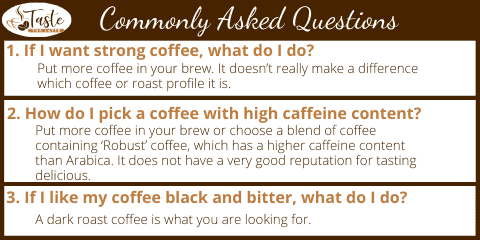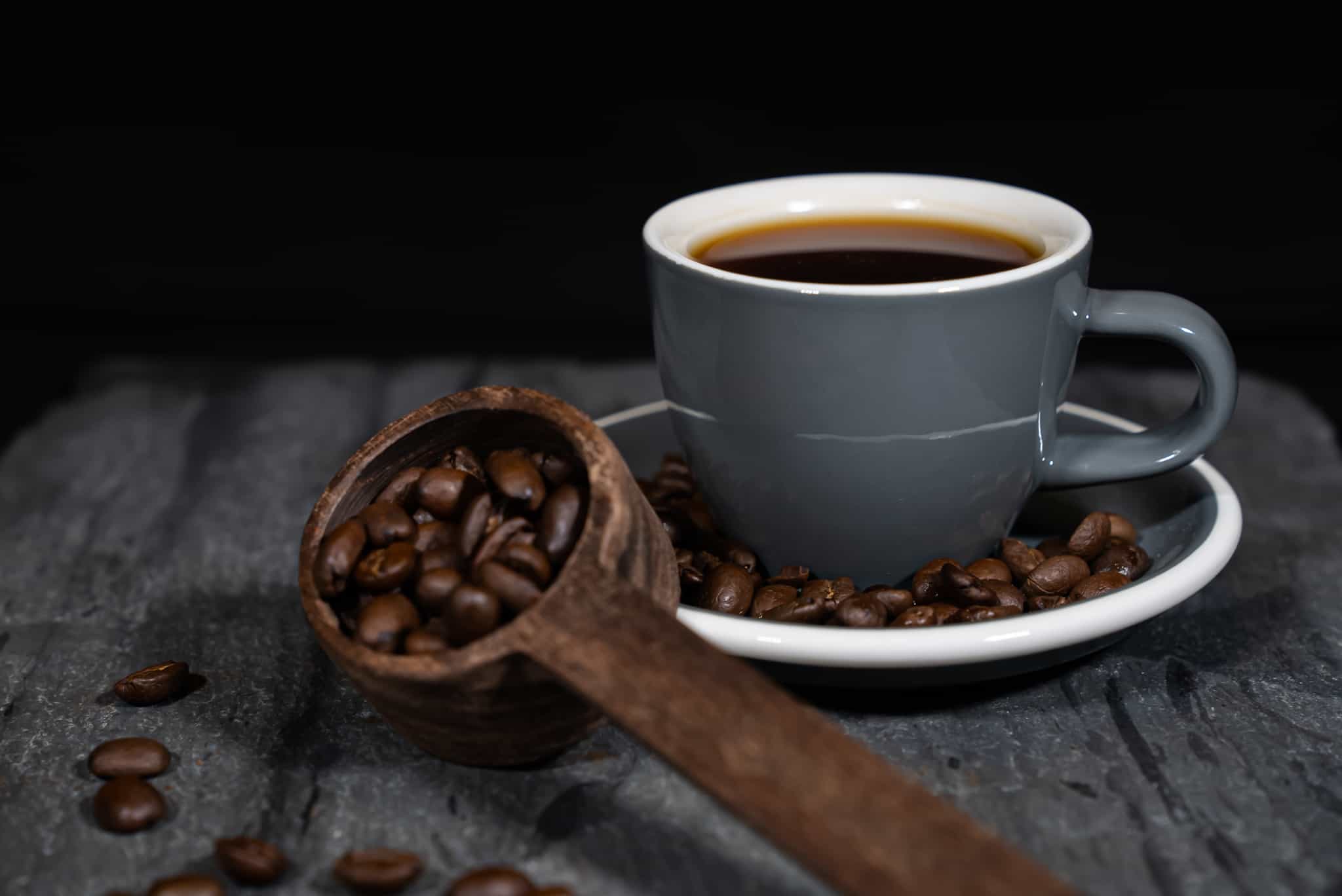Are you one of those who stand in the coffee aisle at the grocery store, staring all the options down, wondering what to purchase? There’s such a variety of blends, origins, and roast profiles to choose from. Possibly the most confusing thing of all is the strength number on the side of a packet.
Which coffee roast is the strongest? Most coffee roasts are all the same, and it’s important to know that coffee roast and coffee strength are two separate things. The only thing that can influence the strength of your coffee is the amount of coffee you put in.
So, a coffee made with 60g of coffee and 500ml of water will be twice as strong as a cup of coffee made with 30g of coffee and 500ml water. This is referred to as coffee-to-water ratio.
Strong Related to How Much Caffeine Coffee Has
Many believe a darker roast is stronger than a light roast, but this isn’t the case. The longer you roast coffee, the less moisture it contains. So, by weight, a dark roast coffee will contain more caffeine than a light roast coffee because it contains less water. Therefore, it will also have a higher concentration of everything else. But this is the amount of caffeine – which is unrelated to strength.
If you are looking for coffee that has more mg of caffeine, using Robusta coffee beans over Arabica beans is what you are looking for. Coffee drinkers who use Robusta beans typically don’t mind a more bitter taste to their coffee, since Arabica coffee beans are considered superior. It’s just a matter of personal preference.
There are various coffee companies that advertise have especially high caffeine content. Some of these are Death Wish Coffee, Biohazard, and High Voltage.
Now, you’re probably asking yourself, what are the strength numbers on the side of my coffee bag? Well, good question! Let me explain.
What is Roast Profile?
Roast profile is the roasting process that coffee beans have undergone. Certain factors are taken into account, including the coffee’s density, how it was processed, variety, and hardness. It basically describes the coffee’s flavor and characteristics.
Strength Rating 1 – 2 (Light Roast)
Think of a coffee bean as a joint of beef. You can have your beef rare, medium, or well done, which also applies to coffee. Different roast levels are often termed ‘light,’ ‘medium,’ and ‘dark.’
A good lightly roasted coffee will usually have lots of delicate flavors you can taste. An example of this would be a lighter roast Kenyan coffee; this could have clear blackcurrant and lemonade flavors when roasted lightly, which would most likely be lost if roasted to a darker profile. In specialty coffee, this is what people are after, roasting coffee to maximize both sweetness and these (often delicate) flavors in the coffee.

How does that happen? When cooking anything, many chemical reactions occur, the most noticeable one being the milliard reaction. The Maillard reaction begins as soon as the green beans start turning brown. This chemical reaction occurs between amino acids, giving browned food (or coffee in this case) its flavor.
During this process, aroma and flavor compounds are released. Maillard reactions combined with caramelization – where the sugars in the coffee start to caramelize – increase the coffee’s sweetness and decrease the grassy flavors of the (raw) green coffee. Following caramelization, the ‘first crack’ will happen, where the coffee bean audibly cracks as the moisture inside it vaporizes.
Soon after this point, a light roast beans would be done. These coffees represent the lower numbers on the bag, about a 1-2 or 2-3.
These coffees are lighter, more delicate flavors, and are no stronger or weaker than any other coffees, just not roasted for as long. They will look light brown in color and matte in finish. The surface of the beans will not have an oily finish.
Strength Rating 3-4 (Medium Roast)
When coffee is taken beyond a light roast into a medium roast, we start to have pyrolysis – this is basically when it just gets cooked a bit more! The caramelization speeds up, and the coffee beans go from light brown to darker brown. Medium roast beans have a more balanced flavor.
The coffee is medium to dark brown, and the beans have a matte finish. Flavor-wise, any delicate acidic flavors will start to be dampened down while the more sweet and bitter flavors will start to come through. So in the aforementioned Kenyan coffee, you might begin to lose the blackcurrant notes, which is why a roaster may not choose to roast it this far.

However, suppose you had a coffee from El Salvador which had some fantastic sweet caramel notes. In that case, you may want to roast it a little longer than a light roast to highlight those flavors and balance them with any acidic flavors present in the coffee.
Strength Rating 4,5,6 (Dark Roast)
Once you go beyond a medium roast, the coffee will have a second crack (moisture release) from the roaster bean. At this point, the oils will start to come from within the coffee to the outside of the bean. Appearance-wise, you would now be looking at a coffee that is very dark brown and oily on the outside.
Having started my coffee career in a Caffé Nero, this is exactly what I remember from their bags of beans. The acidic flavors in the coffee have probably disappeared now.
Sweetness will also be dramatically reduced because, at this point, we are going beyond a bit of caramelization into burnt sausages on the BBQ territory. Here bitterness is your friend, and that is the higher numbers on the scale. Not stronger (although technically, as I said earlier, it does have more caffeine), it is just more bitter in flavor, and if that is what you like – go for it.

Strength and Bitterness
The numbers on the bags are not a total load of rubbish, but they don’t represent strength at all. They technically represent caffeine content, but I am fairly certain they mean roast profile. It is probably true to say the darker a coffee is roasted, the more bitter it becomes.
I can see how bitterness can be perceived as making a coffee seem “stronger.” But bitterness is not strength, and neither is caffeine content. If you’re still slightly confused, here is a list of questions and answers that may help.

